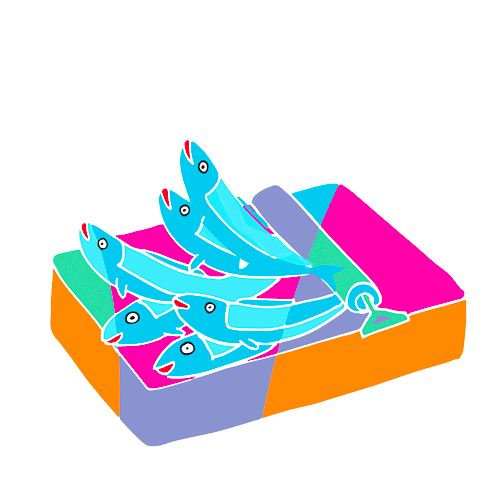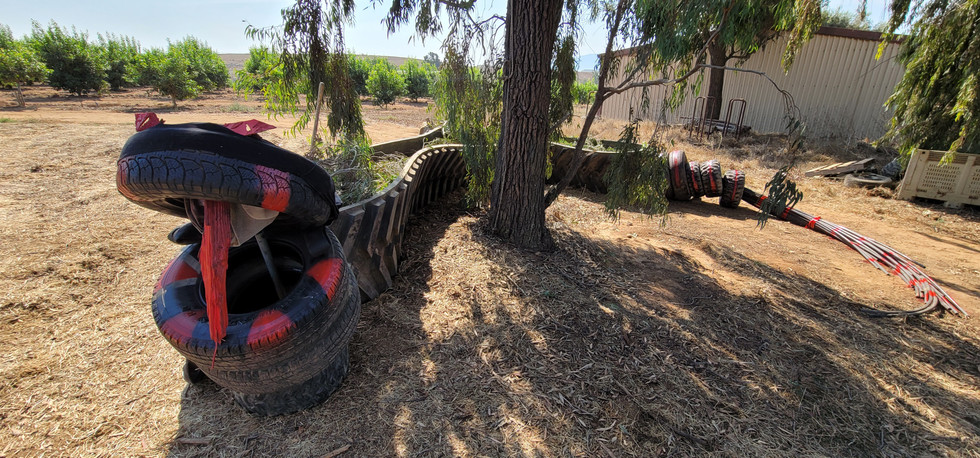My Initial Idea for a Creative Learning Community: Dream School
- Mai Ryuno
- Jul 21
- 6 min read
Updated: Jul 29
When I was writing the previous blog post, "Exploring the American Dream: A New Perspective,", I found myself reflecting on the initial idea for my microschool, which I temporarily named "Dream School."
This concept was born during an entrepreneurship workshop I took during the COVID-19 pandemic. As a community-based, participatory, and collaborative artist, this period challenged me to think outside the box about my art practice. Additionally, all my teaching shifted online or was canceled, providing me with valuable experience and insights into education, remote teaching, and the potential benefits of learning outside the traditional classroom.
What’s A Dream School?
I reflected on the concept of a "Dream School" and its deeper meaning. While the term is often used to describe colleges where a student's academic qualifications are borderline for acceptance, it led me to consider the essence of a dream itself. A dream, by its very nature, is not yet a reality, but it can be brought to life through imagination and visualization. This aligns perfectly with my vision for a school: a place where students can truly imagine and develop creative ideas—ideas that might not be tied to traditional academics or career paths—and then learn how to transform those ideas into reality.
My own creative process as an artist, specializing in conceptual and interdisciplinary work, serves as a significant source of inspiration. My approach begins with an idea, and then I determine the best way to bring it to life, rather than restricting myself to a specific form or medium or following conventional methods.
My primary influence on understanding and practicing art for my life was developed at the now-closed San Francisco Art Institute, where I received my master's degree and also worked in the public education department, which offered art programs for youth and the community. I recently read the interview piece, "A Home for Experimentation - The Spirit of SFAI Lives on" by Claire Bradley as part of the school's retrospective exhibition at SFMOMA, opening on July 26, 2025. In the interview, the school's librarian Becky Alexander says, "SFAI was a place where artists — and by extension new art forms — could flourish. The school provided the conditions in which new art could grow: space, time, and the collectively held belief that exploration and experimentation are of intrinsic value." One of my mentors, Paul Kos, an artist and instructor of performance, video, and new genres, called it a laboratory, where experimentation wasn’t just allowed, but was the whole point.
San Francisco Art Institute (closed in 2022) and a view of the city from the school.
Education During the Pandemic
During the initial phase of the pandemic, transitioning to online instruction was quite an experiment. I recall being asked to move all my classes online after about a month of in-person teaching. This timing was beneficial as I had already established relationships with the students.
However, many aspects of holding a class online were unknown. To maintain a sense of community and connection, I utilized not only the official instruction platform but also social media such as Instagram and YouTube. Although it was a challenging period, I found it to be a creative time, constantly seeking innovative ways to keep us connected and maintain a positive and hopeful outlook for their learning and living in an unprecedented time.
My 3D design class in 2020 was a particularly inspiring experience. This was a new course for me, and it was taught entirely remotely. Despite some initial challenges with online learning, the remote format gave students the freedom to work from anywhere, collaborate with anyone, and utilize any materials they had available.
I was particularly impressed by two student projects that demonstrated remarkable creativity and resourcefulness.
One student created a playful sculpture called "GoKart" using only recycled materials found at his uncle's house. This student had previously been in my drawing class, and I often felt that drawing on paper was too restrictive for his creativity. I was thrilled to see what he was able to create in collaboration with his uncle. During the class critique, he shared his entire process, from his initial inspiration by a shopping cart to the trial-and-error construction. Finally, he photographed the finished product with himself on it as if he were riding the cart. He even mentioned it was a bit scary to try out, but he was so happy to bring his idea to life, even if it wasn't yet perfect.

In another instance, during an individual brainstorming session for a project, a student asked if he could use some tires from his yard. Without knowing his exact plans, I immediately said "Yes!" because I was excited by his unique idea and how it connected to his everyday life. He ended up creating a snake-shaped planting bed in his yard using multiple tires, even operating a lift to place them. This project demonstrated his creativity with available materials and his practical skills, going beyond traditional art mediums and techniques.
Snake Planning Bed, Student Work for 3D design class project, 2020.
These projects wouldn't have been possible in a typical classroom setting due to limited space and standard art class materials.
Freedom to Imagine and Dream Big
When I moved to the United States with the dream of becoming an artist, I never imagined how meaningful my curiosity for art would become in my life. I had left home in Japan, telling my mother I'd be back in a couple of years, and I had only saved enough money to attend community college for that period. However, I managed to find a way to attend a school that became my "Dream School." While I began my art studies at a community college, my true artistic journey began at the San Francisco Art Institute.
At the school where experimentation was encouraged, I had the freedom to explore ideas, even those that initially seemed crazy. I recall one particular instance during my graduate thesis show when I developed a participatory performance and installation artwork. This piece integrated clothing, food, and people.
For this project, I pre-built an installation consisting of 600 strands of white thread and 600 needles hammered onto walls. These components were then transported to the exhibition site for installation. The threads formed part of a white dress, the front of which transformed into a tablecloth covering a dining table. At this table, I, along with other participants, shared a meal with randomly invited individuals.
This project was made possible by the supportive environment that fostered imaginative and ambitious thinking, provided by both professors and fellow students.
Creative Education at Play Full Ground
During my time at the San Francisco Art Institute, I initially focused on printmaking, a medium I enjoyed learning and practicing. After taking several printmaking classes at the community college, I was convinced it was my chosen medium.
However, a pivotal moment occurred during a tutorial at SFAI when a professor encouraged me to think beyond printmaking. He challenged me to consider how I would share a memorable experience with others, suggesting that I wasn't limited to making prints simply because it was my current focus. This conversation prompted a period of self-reflection, and I realized my answer was to share live moments with others. That's when I began creating participatory performances, using myself as a medium. This experience liberated me from the confines of a specific medium and form, allowing me to find a more authentic way to express myself. This also led me to engage in teaching, which I see as my art, in the sense that I use myself in the role of an instructor, mentor, or facilitator, sharing my knowledge, skills, and experience with students for a memorable and inspirational learning experience.
My goal for Play Full Ground's creative microschool is to build a learning community that empowers young people to break free from constrained expectations about their learning and future within academics or career-related content. We aim to help them explore their identity, passions, and purpose for life more freely and deeply. Students will be encouraged to imagine and dream big, unconstrained by preconceived notions of what dreams can be and what imagination and creativity can do for themselves and others.
At Play Full Ground, I strive to foster an environment where "yes!" is the default response to any idea. Even if a student's idea initially seems unconventional or unfamiliar, our approach is always, "Let's figure it out and make it happen!"
I believe that every idea holds creative potential. Play Full Ground is a space where learning meets creativity, and students gain the skills to transform their innovative concepts into reality through hands-on experimentation and learning by doing.
The Future of Dream School
My vision for Play Full Ground Microschool continues to evolve as we look ahead. I'm dedicated to creating a space that not only nurtures creativity but also fosters resilience and adaptability. I believe these skills are essential for success in our constantly changing world.
Our commitment is to provide a platform where students can explore their interests and passions without the constraints of traditional education. By encouraging exploration and experimentation, we aim to help students discover their unique paths in life.
I invite everyone to join us in shaping the future of education. Together, we can create a community where dreams are not just imagined but realized. Play Full Ground is more than just a new microschool; it can be a movement towards a brighter future for all learners.













Comments